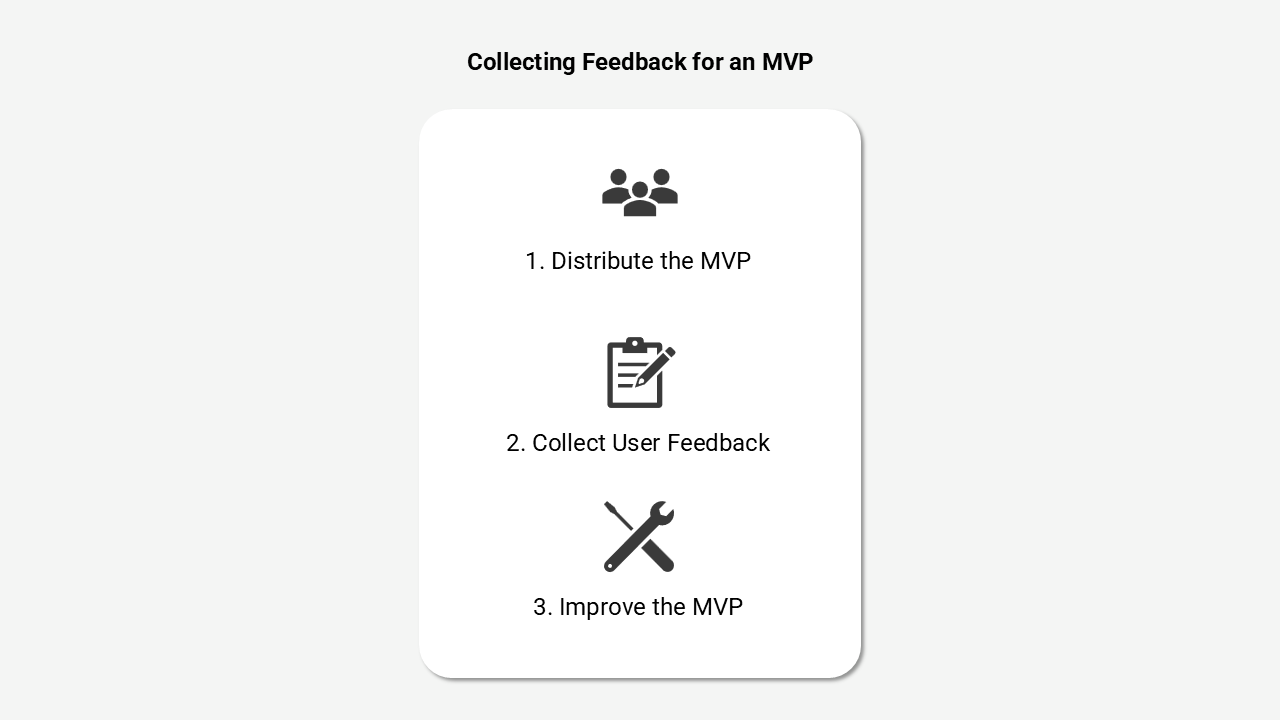Collecting user feedback is a crucial step when trying to improve your MVP. In today’s blog, we will cover how user feedback can turn your simple MVP into a product that is more optimal for future customers. Now, that is actually one of the last steps before you can truly call yourself a software startup entrepreneur and work toward your market launch. After that, only the sky is the limit!
For this blog, we have made the following video:
Collecting Customer Feedback
If you have read our last blog about developing a Minimum Viable Product, you will know that getting customer feedback to improve your software application is a crucial next step. As I stated in that blog, the purpose of an MVP is to make a hypothesis as to what basic features your target audience really wants to solve their problem. It is now time to validate that hypothesis!
The first step when collecting user feedback is to distribute the MVP to early users. You then need to set up ways to practically collect their feedback. The last step is to strategically improve your product in the ways they want.

1. Distributing the MVP to Early Users
Let’s tackle the first question, who should you give out your MVP to? Well, the best group to test your MVP is of course your target audience, which we helped you find in a previous post. However, it might not be super easy to get them to try your MVP without either knowing you first or getting something in return. I would personally say that doing both might just be the best way. You would then hang out in communities where your target audience is and see if anyone is interested in testing your MVP for free. However, I would also keep the door open if anyone wants something in return. You can then offer something like a gift card or a discounted price when your product reaches the market.
Great, but what about the actual distribution of the application? Well, that of course depends on what kind of application you are developing. For mobile apps, there are tools such as TestFlight or Firebase that can facilitate testing. For other application types, I would strongly suggest checking out a previous blog we have made regarding a software licensing solution. Then, you are able to send out your product’s code and hand out license keys to the users to make sure only they have access to it.
2. Collecting User Feedback in Practical Terms
Now to the second question, how do you collect their feedback in practical terms? I would suggest using a mix of surveys, in-app user behavior observations, and 1:1 conversations. Creating a survey is a great starting point because it forces you to come up with the most important questions to ask. This can easily be done for free using Google Forms, with a simple shareable link and insightful analytics data. You can also observe directly in your app how users utilize your basic features using tools such as Mixpanel or Amplitude. 1:1 conversations with the users will most likely give you the best input regarding what features you should implement next.
3. Improving the MVP Using Feedback
Now that you have their feedback written down, you have to structure that data to find what you need to prioritize. A simple categorization of “critical issues”, “suggested features”, and “nice-to-haves” is a great way to start. For example, performance issues or features not working properly should of course be addressed immediately. Additional features they suggest should be prioritized after the critical issues. For these, I would try to find what features are the most requested and see which of those are the easiest and quickest to develop and begin with those. Lastly, nice-to-haves are always good to keep in mind, but they are not likely to provide a lot of value this early in your journey. I would not focus on those at all for now.
Looking Ahead – Stay Ambitious
Great, so what’s next? All of the blogs we have made in this series have focused on the development phase of the software startup. We have looked at finding the problem to solve and the target audience. We have now recently covered how to build and improve an MVP that solves that particular problem for that particular target audience. If you have made it this far, the next step is where it really gets fun. It is now time to develop a go-to-market strategy and find your first actual customers. After that, the focus should be on scaling your newly created software startup.
However, if you have not gotten your MVP quite right just yet, or if you are stuck on an earlier step, there is no rush. The beauty of an MVP is that it is quite easy to start all over from scratch and try again. Even if you have made it this far in the series, the startup phase is really where most people fail!
That is why we are devoted to helping you along the way with more posts like this one. And regardless of whether you are aiming for the stars or just happy reaching the clouds, we at Cryptolens always aim to make your journey more fun, prosperous, and effortless.
Thank you for reading, Stay Ambitious!